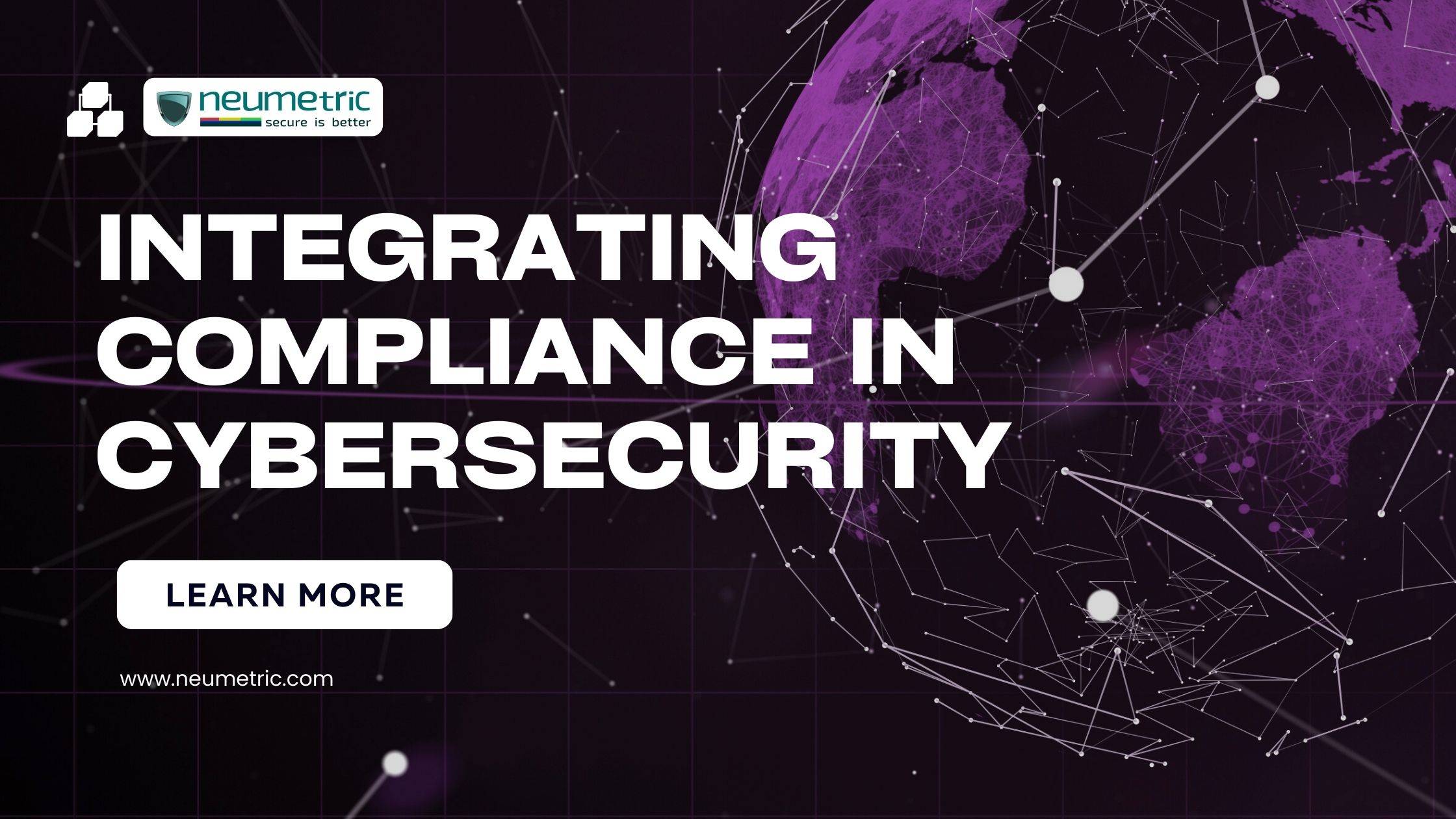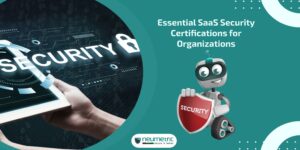Table of Contents
ToggleIntroduction
In cybersecurity, compliance refers to adhering to established norms, standards & frameworks that regulate the secure handling, processing & storage of sensitive data. It entails putting in place safeguards to guarantee that an organisation operates within the legal & ethical limitations established by relevant cybersecurity rules.
In today’s digital landscape, the incorporation of compliance measures into cybersecurity is critical. It extends beyond a checkbox exercise to serve as a proactive strategy for mitigating risks, protecting sensitive data & maintaining stakeholder confidence. Integrated compliance measures help to an organization’s overall resilience by encouraging a security posture that is in line with regulatory regulations.
The cybersecurity landscape is dynamic & ever-changing, moulded by technological breakthroughs & the increasing sophistication of cyber threats. Organisations face a slew of issues in securing their assets as linked devices, cloud computing & digital ecosystems proliferate. The overview will delve into the current state of cybersecurity, emphasizing the need for adaptive measures to counter emerging threats & the role of compliance in navigating this complex environment.
The Intersection of Compliance & Cybersecurity
A. Understanding the Regulatory Landscape
Important Regulatory Bodies & Frameworks: Navigating the convergence of compliance & cybersecurity necessitates a thorough awareness of the regulatory environment. Guidelines & standards are established by key regulatory authorities such as the Federal Trade Commission [FTC], the National Institute of Standards & Technology [NIST] & international entities such as the General Data Protection Regulation [GDPR]. Frameworks, such as the NIST Cybersecurity Framework & ISO/IEC 27001, offer organisations an organised approach to compliance that focuses on risk management & best practices.
Compliance Requirements by Industry: Aside from broad regulatory agencies, different industries have distinct compliance standards adapted to their specific issues. It is critical to understand industry-specific rules, such as the Health Insurance Portability & Accountability Act [HIPAA] for healthcare & the Payment Card Industry Data Security Standard [PCI DSS] for the banking sector. Adherence to these requirements guarantees that organisations not only fulfil basic cybersecurity standards, but also those unique to their operating context.
B. Challenges in Achieving Cybersecurity Compliance
Regulatory Requirements’ Complexity: The intricacy of regulatory regulations is one of the key hurdles in achieving cybersecurity compliance. Regulations frequently cover numerous jurisdictions & industries, resulting in a layered & complex structure. Organisations must interpret these criteria to ensure that their cybersecurity measures are in accordance with the complex collection of rules governing data protection, privacy & security.
Adapting to Rapidly Changing Threats: The cybersecurity landscape is characterized by the constant evolution of cyber threats. New attack vectors, sophisticated malware & emerging technologies challenge organizations to adapt rapidly to changing circumstances. Achieving compliance requires not only meeting current regulatory standards but also preparing for future threats. This necessitates a proactive approach, incorporating adaptive security measures & continuous monitoring to stay ahead of cyber adversaries.
Building a Foundation: Cybersecurity Compliance Frameworks
A. Overview of Common Cybersecurity Frameworks
NIST Framework for Cybersecurity: The NIST Cybersecurity Framework is a well recognised & comprehensive reference for organisations to monitor & improve their cybersecurity policies. It is organised around five fundamental functions: identify, protect, detect, respond & recover. Each function offers a collection of principles & best practices to help organisations improve their overall cybersecurity posture.
ISO/IEC 27001: ISO/IEC 27001, a global standard for Information Security Management Systems [ISMS], was established together by the International Organisation for Standardisation [ISO] & the International Electrotechnical Commission [IEC]. This framework offers a systematic approach to sensitive information management, including risk management, security measures & continual improvement. ISO/IEC 27001 is very beneficial for organisations looking to develop a solid information security management framework.
B. Customizing Frameworks for Organizational Needs
Tailoring Frameworks to Industry Requirements: While common frameworks like NIST & ISO/IEC 27001 provide a solid foundation, organizations must customize these frameworks to align with specific industry requirements. Different sectors have unique cybersecurity challenges & regulatory mandates. Tailoring a cybersecurity framework ensures that it not only meets general standards but also addresses industry-specific compliance needs. For example, healthcare organizations may focus on aligning with the Health Insurance Portability & Accountability Act [HIPAA], while financial institutions may emphasize compliance with the Payment Card Industry Data Security Standard [PCI DSS].
Addressing Unique Organizational Challenges: Organizations vary in terms of size, structure & operational complexity, leading to distinct cybersecurity challenges. Customization involves addressing these unique organizational challenges to ensure that the chosen framework is practical & effective. This may include considerations for budget constraints, resource availability & the specific nature of the organization’s digital assets. Customizing frameworks allows organizations to create a tailored approach that aligns with their risk appetite & strategic objectives.
The Role of Risk Management in Compliance Integration
Identifying & Evaluating Risks: Effective compliance integration into cybersecurity strategy starts with a clear awareness of cybersecurity risk. Identifying possible threats to the organization’s information assets, systems & procedures is part of this approach. Conducting comprehensive risk assessments assists in identifying vulnerabilities, threats & potential consequences, laying the groundwork for informed decision-making in pursuit of compliance goals.
Balancing Risk Tolerance with Compliance Goals: A crucial part of risk management is balancing risk tolerance with compliance objectives. Organisations must assess their risk tolerance & match it to the requirements of current rules. This includes identifying acceptable levels of risk exposure & developing risk mitigation methods that not only improve cybersecurity but also maintain regulatory compliance.
Creating a Risk-Aware Culture: Effective compliance integration requires the incorporation of risk management into organisational culture. This entails cultivating a risk-aware culture in which workers at all levels understand their roles in risk identification, reporting & mitigation. A culture that prioritises cybersecurity & compliance fosters proactive engagement, which reduces the likelihood of problems & improves overall resilience.
Aligning Risk Mitigation & Compliance Objectives: Integrating risk management into compliance strategies necessitates a unified strategy in which risk reduction initiatives are smoothly aligned with compliance objectives. Organisations can prioritise measures that not only decrease risk exposure but also assure regulatory conformance by integrating risk management strategies with specific compliance needs. This collaboration improves the efficiency & efficacy of cybersecurity & compliance efforts.
Leveraging Technology for Seamless Integration
Tools for Automation & Compliance Monitoring: The use of technology in the seamless integration of compliance into cybersecurity processes is critical. Automation tools & compliance monitoring systems automate processes, decreasing manual labour & increasing accuracy. Automated solutions may continuously monitor compliance status, generate reports & provide real-time insights, allowing organisations to remain ahead of changing regulatory requirements.
Artificial Intelligence & Compliance Analytics: The incorporation of Artificial Intelligence [AI] & compliance analytics enhances the capabilities of cybersecurity programs. AI-driven tools can analyze vast datasets, identify patterns & detect anomalies that may indicate potential compliance issues. By leveraging machine learning algorithms, organizations can proactively address risks, predict compliance trends & optimize their overall cybersecurity posture.
Implementing Technology Solutions: Challenges & Considerations
Concerns about data security & privacy: While technology makes integration easier, businesses must handle data security & privacy concerns. It is critical to ensure that automated systems follow strong security procedures in order to avoid unauthorised access or data breaches. Data protection requirements must be a primary factor in the selection & implementation of technology solutions.
Training & Skill Requirements: Implementing technology solutions for compliance integration requires skilled personnel. Organizations must invest in training programs to equip their teams with the necessary skills to manage & operate these technologies effectively. Addressing the human factor ensures that technology complements the expertise of cybersecurity professionals, enhancing the overall success of compliance initiatives.
Overcoming Common Pitfalls in Integration
Lack of Communication Between Compliance & Cybersecurity Teams
Improved Collaboration Strategies: To break down the barriers that exist between compliance & cybersecurity teams, open communication channels must be established. Collaboration is facilitated by regular meetings, collaborative training sessions & shared documentation platforms. Establishing open lines of communication ensures that compliance objectives & cybersecurity initiatives are in sync, enabling a united approach to risk management.
Dismantling Barriers to Holistic Integration: Integrating holistically entails breaking down departmental silos & cultivating a culture of cross-functional collaboration. This can be accomplished by fostering cooperative projects, creating a clear knowledge of organisational goals & including compliance considerations into cybersecurity operations. Organisations can solve difficulties together & ensure compliance is an important element of the cybersecurity framework by developing a collaborative atmosphere.
Adapting to Regulatory Changes
Continuous Monitoring of Regulatory Updates: Adapting to regulatory changes requires a proactive approach to monitoring updates. Establishing a dedicated team or utilizing automated tools for continuous regulatory monitoring ensures that organizations stay informed about evolving compliance requirements. Regularly reviewing & updating compliance strategies based on the latest regulatory developments enables swift & effective responses to changes in the legal landscape.
The Future Landscape: Emerging Trends in Integrated Compliance
Attempts towards Global Harmonisation: Global harmonisation initiatives to streamline & standardise cybersecurity legislation are part of the future of integrated compliance. Organisations should be aware of international activities aimed at harmonising regulatory standards, since these may influence future compliance needs & have an impact on cross-border operations.
New Compliance Frontiers to Be Expected: Organisations must anticipate new compliance frontiers to stay ahead in the integrated compliance landscape. This entails actively participating in industry conversations, interacting with regulatory organisations & keeping a close eye on technology improvements. Anticipating future compliance trends allows organisations to modify their strategy before new regulations become required.
Blockchain & Decentralized Compliance: Blockchain technology is emerging as a disruptor in compliance, offering decentralized & transparent solutions. Organizations should explore the potential of blockchain for decentralized compliance, ensuring data integrity, transparency & security in compliance processes.
Conclusion
Integrated compliance is a dynamic & ever-changing process that necessitates avoiding frequent mistakes, adjusting to regulatory changes & embracing technological advances. In the ever-changing cybersecurity landscape, this essay has studied techniques to improve collaboration, manage difficulties & prepare for the future of compliance.
Long-term advantages of integrated compliance include greater cybersecurity resilience, risk management & a proactive approach to regulatory compliance. Organisations lay the groundwork for long-term success in an increasingly complex digital world by incorporating compliance into the fabric of their cybersecurity plans.
The conclusion is a call to action, encouraging organisations to put the tactics presented throughout the article into action. It emphasises the significance of continual improvement, collaboration & staying ahead of legislative & technical changes in order to achieve cybersecurity excellence through integrated security solutions.
FAQ’s
- What is the purpose of integrating compliance into cybersecurity?
Integrating compliance into cybersecurity ensures that organizations not only meet regulatory standards but also proactively address cyber threats, mitigating risks & building a resilient security posture.
- Why is continuous monitoring of regulatory updates crucial for compliance integration?
Continuous monitoring ensures organizations stay informed about evolving compliance requirements, allowing them to adapt strategies swiftly to comply with the latest regulations.
- How does risk management contribute to compliance integration?
Risk management involves identifying, assessing & mitigating cybersecurity risks, aligning them with compliance objectives to create a cohesive strategy that balances risk tolerance with regulatory requirements.





